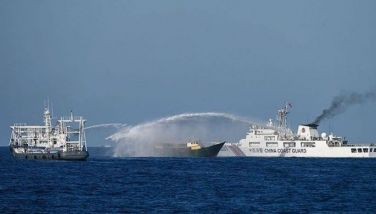#Journeyto30 The bearers of the sword
MANILA, Philippines – As we spent the previous weekend sunbathing in Boracay, or watching our favorite noontime show, or strolling with the family at the local mall, machinegun fire echoed through the forests of Tipo-Tipo, Basilan as government troops and members of the Abu Sayyaf clashed over the weekend.
The gunfight erupted around 8 a.m. of Saturday after some 120 Abu Sayyaf members ambushed government troops that were sent as reinforcements for an offensive against the terrorist group in a remote village in the town. The gunfight, which lasted for 10 hours, was so close it involved hand-to-hand combat between soldiers and terrorists.
Eighteen soldiers from the 44th Infantry Battalion, 4th Special Forces Battalion and the 4th Cavalry, as well as five Abu Sayyaf members, were killed. The terrorists beheaded some of the soldiers.
Meanwhile, among the terrorists who died in the encounter was Moroccan bomb expert Mohammad Khattab. The jihadist was trying to link up Abu Sayyaf with the Islamic State.
The encounter at Tipo-Tipo is déjà vu for government forces. The encounter echoed the same scenario nine years ago when Moro Islamic Liberation Front (MILF) forces engaged them in a firefight in the same town, killing 14 Marines. The Philippine STAR captured the tragedy in its July 12, 2007 front page.
Just like what happened over the weekend, Abu Sayyaf members, who the military were pursuing when they encountered the MILF, were alleged to have beheaded the soldiers in 2007. Before the encounter happened, the military was conducting a check of the area after reports surfaced that kidnapped Italian priest Giancarlo Bossi was spotted in the area.
Abu Sayyaf is known to still be holding several hostages, including a Norwegian, two Canadians and a Filipina. The terrorist group, now under the leadership of Isnilon Hapilon — a wanted terrorist with a $5-million bounty on his head — pledged allegiance to the Islamic State (IS) last year.
The group’s allegiance to the Islamic State is a sign that the group is returning to its ideological roots. It was originally founded in 1991 as an offshoot of the Moro National Liberation Front (MNLF). Believing that the MNLF has lost its credibility in the fight for an independent Muslim homeland in Mindanao, Abdurajak Janjalani, a former MNLF fighter who experienced fighting the Soviets in Afghanistan, founded the group. The group’s name means “bearer of the sword” in Arabic.
In its early days, Abu Sayyaf was a fierce and relentless group. In 1994, it launched a series of bombings in Zamboanga City that killed 71. The following year, it attacked the town of Ipil, where they robbed banks, looted stores, burned the center of the town to the ground and killed 53 people. A Saudi Islamist bankrolled the group’s operations through a bogus Islamic foundation. It also received funds from al-Qaeda leader Osama Bin Laden.
But after the death of Janjalani in an encounter with police in 1998, the group fell into disarray and was inactive for a time. It was only until sometime in 2000, when Abdurajak’s younger brother, Khaddafy Janjalani, succeeded him, did the group surface again, and began kidnapping foreigners from tourist islands in nearby Malaysia.
It was also responsible for the Dos Palmas Resort kidnappings that included missionary couple Martin and Gracia Burnham. The Burnhams were among the longest held in Abu Sayyaf captivity; they were held until Philippine Special Forces launched a rescue in 2002 that resulted in the death of Martin.
Khaddafy’s Abu Sayyaf also established links with Southeast Asian terror group Jemaah Islamiyah. The terror group provided Abu Sayyaf with bomb making skills that led to the bombing of Superferry 14, which killed 116, making it the deadliest terrorist attack in Philippine history.
The leadership of the Janjalanis proved to be the most prolific and most destructive era in Abu Sayyaf history. But after Khaddafy’s death in 2006, the organization again fell into disarray due to lack of competent leadership. Much of its funding and links with the Jemaah Islamiyah have been severed by Indonesia’s crackdown on JI. After 2006, the group decayed into a mere kidnap-for-ransom group of bandits than a band of rebels driven by ideological fervor.
With Abu Sayyaf’s resurgence under the tutelage of the Islamic State, the group has come full circle, enlivened with new extremist ideas to commit more gruesome acts of terror. A bolder, fiercer Abu Sayyaf will definitely become one of the major headaches of the new administration that will takeover on June 30.
- Latest
- Trending



























